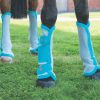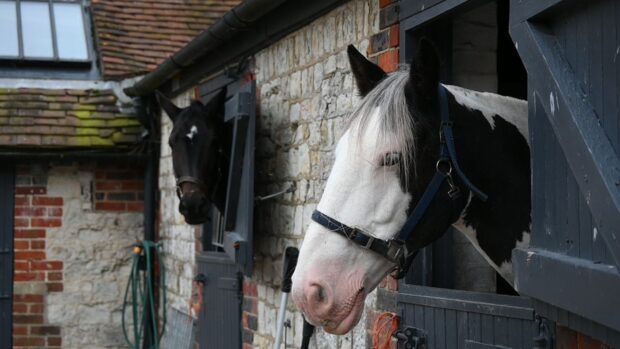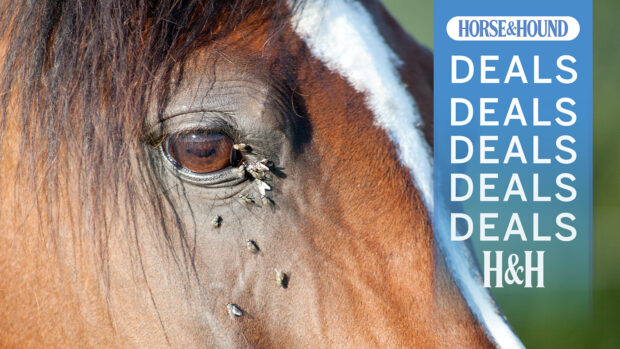Horse & Hound meets one owner whose 14.3hh all-rounder suffers from photosensitivity — and finds out how she is managing the problem
The pony: Dot, 15-year-old 14.3hh all-rounder
Problem: Photosensitivity
Symptoms: Professional rider and instructor Frances Murray first became aware of her Welsh section D/warmblood coloured mare’s photosensitivity five years ago.
“I thought she had mud fever on the back of her pasterns and around her coronets,” says Frances. “She was tetchy and the skin looked raw. Her face markings are just a snip and a star so I’d never given her sun protection before and never had issues with sunburn.”
Soon, everything that was white on the mare’s body was crusty and swollen and all the hair fell out.
“It was so bad her whole snip fell off — it was disgusting,” says Frances. “She looked like an acid burns victim.
She was sore, agitated and we had to sedate her every day to treat her.”
Despite the application of steroid creams to try and soothe the skin, Dot showed little improvement and was taken to Rossdales for further skin tests. She spent five days at the hospital, and at one point Frances thought she might have to have Dot put to sleep.
Liver function tests revealed raised enzyme levels, which is indicative of photosensitivity. Luckily, Dot picked up, and after several months’ rest was able
to resume work.
“I’ve had her six years, and she’d never suffered from it before — I know the previous owner and the breeder,” Frances says. “There isn’t a treatment for the condition so now it’s about management.”
Management strategy: “During the winter, her coat seems to offer enough protection,” says Frances. “I start rugging her again in May.”
Frances also advises to avoid clipping as it exposes the skin.
In summer, Frances flips Dot’s grazing pattern so she comes in during the day and goes out at night to keep her out of the sun. She also wears a UV-protective fly rug or sweet itch rug, with a full neck and eye and ear holes.
“At competitions, I keep the rug on as much as possible,” says Frances.
There are also sun-protection boots available if your horse will tolerate them.
Dot has regular liver function tests to check how her liver is coping. If she looks like she is struggling and may have an outbreak she’s brought in from the field to be stabled 24 hours a day.
If you are concerned about any summer ailments your horse is suffering from, please contact your vet
You might also be interested in:

How to avoid your horse suffering from sunburn this summer

Are buttercups poisonous to horses? We ask the experts…
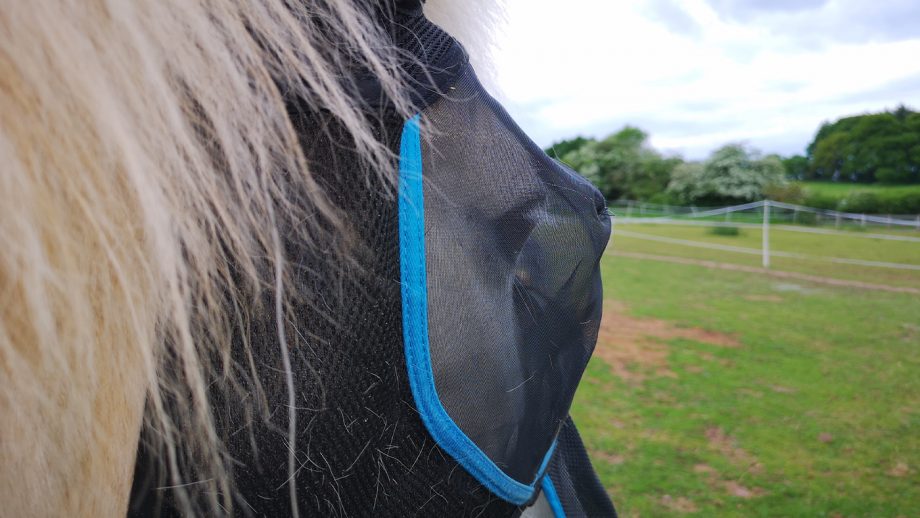
Discover the ideal fly mask to keep your horse comfortable all summer long

8 rugs to help protect horses who are prone to sweet itch

Fly protection on a budget: 6 fly rugs under £50
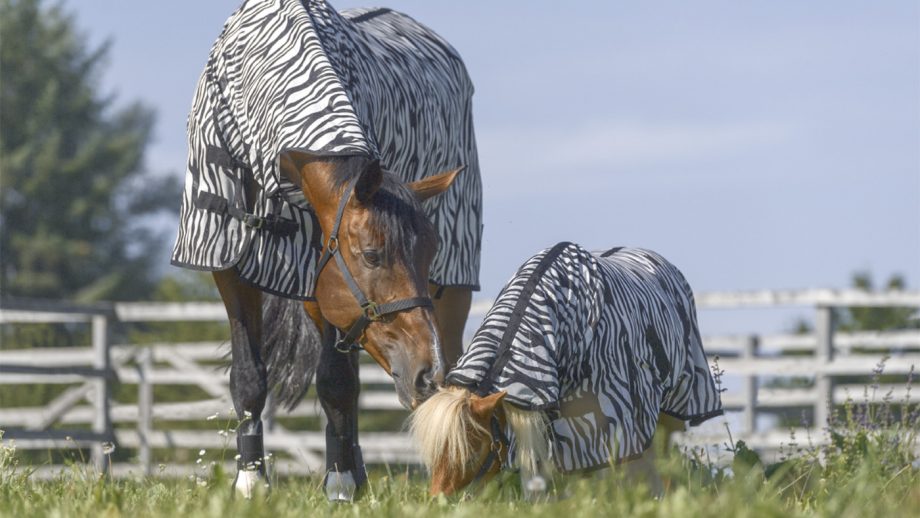
12 fly rugs to suit every shape, need and budget

Subscribe to Horse & Hound magazine today – and enjoy unlimited website access all year round
Horse & Hound magazine, out every Thursday, is packed with all the latest news and reports, as well as interviews, specials, nostalgia, vet and training advice. Find how you can enjoy the magazine delivered to your door every week, plus options to upgrade your subscription to access our online service that brings you breaking news and reports as well as other benefits.

